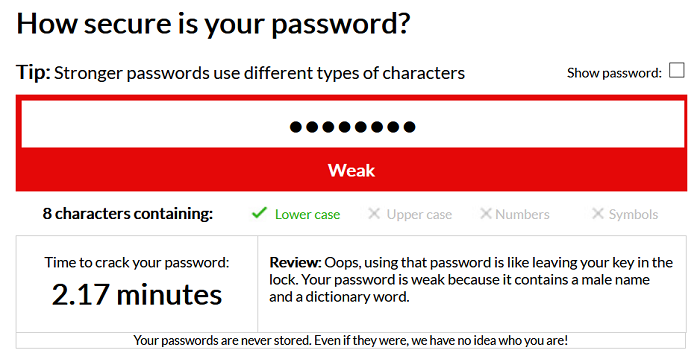


- #Lastpass changes red to green stops working update
- #Lastpass changes red to green stops working password
It is done this way so the hash that you use to authenticate to LastPass is not the same as your key to your Password Database. The hash is created in a similar way to the hash key to your password database, but the hash result is then hashed again to create a new unique hash. This is done by creating Unique ID hash based on your Master Password, and because hash’s are one way, it is not feasible for LastPass to decrypt or are able to determine the Master Password based on this hash. Now the next step is sending the 'Encrypted Data Blob’ to LastPass but because this is authenticated using the same Master Password for your LastPass database, LastPass need to use a method of authenticating the user without storing your actual Master Password. The 'Encrypted Data Blob’ is the only piece of sensitive data that is sent to the LastPass servers (over SSL/HTTPS) it can not be decrypted by Lastpass because they are not sent the 'Master Password’ or the 'Private Hash’ used to encrypt the Password Database. This hash is then used as the key for encrypting your personal password database, the result of the encryption (using AES256 encryption) is a 'Encrypted Data Blob’ (text file of random gibberish) which can only be decrypted with this hashed key. The username, which for LastPass is an email address is sanitised (made all lowercase, no spaces) and is combined with the unaltered Master Password, and encrypted using salting to increase the complexity of the Hash generated. The diagram shows the three inputs: 'Username’, 'Master Password’ and the 'Unencrypted Password Database’, then the process that occurs to encrypt the data, and then finally the outputted 'Encrypted Data Blob’. The first diagram explains how the encryption creates the Encrypted Data Blob (containing your personal password database) which is then synced to the LastPass cloud servers. to successfully complete cracking the hash data 'test’ (salted data is not as simplistic as between 0-9999, I’m just using it as an example.)Ī goal for LastPass is to never know what your Master Password is, or have access to any of the information stored inside your personal password database, to achieve this, all encryption and decryption happens on the user side and none of this completed on the server side. This means an attacker would need to try the same hashed text for every single salt possible to successfully test a single hashed value.Įxample: If the salted data was a number between and the hashed data was ‘test’ the attacker would need to attempt '0000test’, '0001test’, '0002test’ etc.Salt adds an additional bit of data to the data already being hashed to make it more difficult to attack via Brute force or Dictionary attacks.They standardise the length of any string entered:.They are one way because they can not be decrypted, only generated one way.Some terms that need to be explained before going any further are the following:
#Lastpass changes red to green stops working update
Hopefully this makes sense, but what I am really trying to say is I’ve done my best, if there are any errors please let me know so I can update the diagrams. I’ve tried to highlight in red information you do not want LastPass to have and in green or neutral colours public or shared information between the user and lastpass and I’ve picked orange the encrypted data blob to indicate it has important data inside but his protected by encryption. I’ve intentionally left the salting information a bit vague as I could not find much reliable information how it actually worked but will explain a little bit about salting hashes shortly, the main importance is that they are included in the process to increase security. Unfortunately this means I need to be extra careful in my research to make sure what is being describe is what I’m drawing. Now I was actually surprised I was unable to find any diagrams already produced increasing my emphasis on including them in my post. I am a very visual person and when these sorts of technical implementations are explained to me I usually jot it down as a little hand drawn diagram so what I have done is reproduced this in a digital form. To be absolutely honest, LastPass’s response to the security incident is what has sold me on the product and am now a premium member, I don’t want this post to be review of the product but an explanation to a not so technical minded users how the product works and why it is secure. LastPass has gotten a lot press recently with the security scare detailed on there blog, before this time I was not an active LastPass user but I was planning to migrate over from my previous KeePass password database based heavily on recommendations from technical podcasts I subscribe to.


 0 kommentar(er)
0 kommentar(er)
